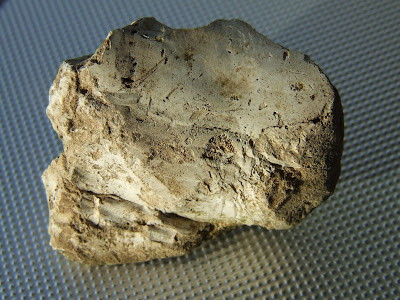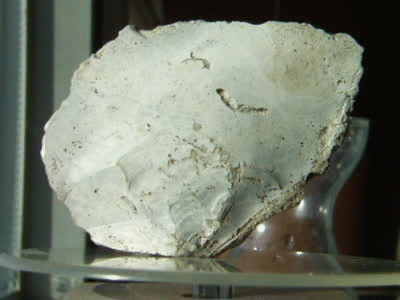Another obvious flint cutting tool from my site, that also stands upright unaided. Unlike most of the materials from my site this one bares few glyphs, and they are subtle.
A simplistic elephant likeness can be seen facing left, and a possible 'lucy' like head profile impression can be seen on the lower left facing downwards.
Although the stone stands unaided, I used blu-tak here, as the tool wouldn't stand for long on the uneven spinning platform.
Below: Another worked stone from my site, this could also be used as a cutting tool. Two crude elephant head shapes can be seen, one facing left and one right, this can be used to describe the direction the animal is heading. As a side note the word Eolith comes from the Greek "eos", dawn, and "lithos", stone .


































